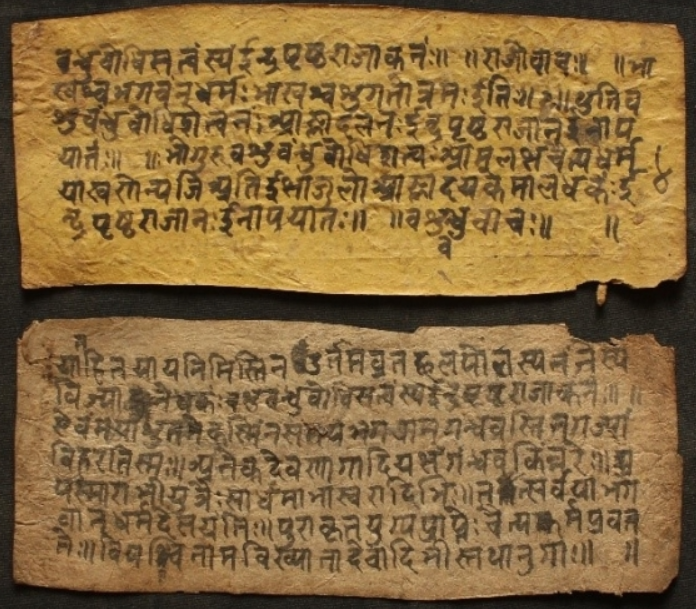Vedic body of literature neither promotes nor denies nonbinary gender people. The ten percent sculptures in Khajuraho temple have a Tantric meaning and have nothing to do with allowing or disallowing any activity. If they do, evidence explaining the same would have been available. Being a practitioner of Vyoma Bindu Bhairava Tantra, I can explain each and every one of these sculptures in their Tantric sense, according to the knowledge passed on to me by my gurus. The fact that these sculptures are Tantric is presented in the Upakhyanas and Sthala Puranas given out by the temple priests and monks who supervised the construction of these temples.
Adulterators do not sign on what they adulterate, so we have no way of showing the name of the person who adulterated it. Research on palm leaves can only show the period to which the palm leaf belongs. Not, the time when the adulterator, adulterated originally into the genealogy of the copies of the palm leaves. A scientific researcher of manuscriptology working on critical editions can provide us with copies where the adulterations are not found. An entire chapter missing or a shloka or a set of shlokas missing or even a line or a word of shloka missing is compared with the other versions of the manuscripts and scientifically through a scientific manuscript research method, decisions are taken with regard to whether a word or a line or a full shloka or a full chapter is adulteration.
When talking about palm leaf Manuscripts, we must understand that writing in between is just not possible. In the absence of printing, multiple copies of the same book were made by copying from one palm leaf manuscript into another set of palm leaves. It is at this stage, that it is possible for the copywriter to add, his or her own shlokas or part of shlokas. These interpolations need not always be done with adulterating interest. Sometimes, the copywriter may do it with the good intention of elaborating the original author’s ideas for the benefit of posterity. But, this interpolator might have misunderstood, the intentions of the original author. This leads to a deviating addition which can be in a way called adulteration. Palm leaf Manuscripts are not conducive to handwriting identification because writing in between in a palm leaf manuscript is not possible, a mixture of handwritings in a given palm leaf manuscript is an impossibility.
1400-year-old or even 1500-year-old commentaries of smritis do not all contain the same verses. Some of them have a few shlokas missing while others may have more shlokas. This was very common for commentaries, as commentaries were not done for each and every shloka but for shlokas where they found that they disagreed with the previous commentator.
With all this evidence of how interpolation is possible even in ancient times and with the advent of printing how easy it is to print an interpolated copy, we have established that interpolation is indeed possible.
I am not denouncing any verse of any book in the Vedic body of literature as adulterated/interpolated because I fear that it offends the current 21st-century social justice narrative.
For example, there are verses in the Vedas that celebrate being a Brahmin and ask to afford special protection to a Brahmin. They say a Brahmin is bhusura, meaning a Devata walking on Earth in the form of a living, breathing human. This might be offensive to other Jaatis. I do not care about that. I do not denounce it.
I know for a fact that Vedas cannot have interpolations/adulterations because they were constructed with such a level of self-anthropological awareness that every single sound contained within will remain untouched.
Other parts of the Vedic body of literature especially as more and more of them started getting recorded by written means started getting a few interpolations/adulterations. We need not be concerned about that as we have the Vedas, still untouched and intact and which are the supreme authority for a Hindu.

